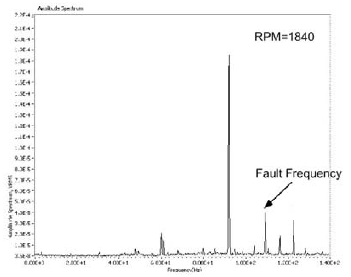Some Observations of Detection of Rolling Element Bearing Outer Race Fault
Lin Liu & ZhuangLiSpectraQuest Inc., 8227 Hermitage Road, Richmond, VA 23228
Published: September, 01 2006
Abstract
The rolling element bearing is used widely in industry. It is one of the most vulnerable components in a machine because it is most often under high load and high speed running conditions. Prompt diagnostics of rolling element bearing faults is critical not only for the safe operation of machines, but also for the reduction of maintenance cost. Among the three main components in a rolling element bearing, the outer race, the inner race and the ball, this work studies the diagnostics of faults on bearing outer race. There is an argument that a rolling element will excite the natural frequencies of bearing component when it passes the fault on the outer race. Therefore, the bearing outer race natural frequencies have been identified by numerical simulation and hammer test. Vibration data were collected on a Machinery Fault SimulatorTM (MFS) with good as well as faulted bearings. The data were analyzed using the VibraQuestTM software and efforts were made to identify the bearing fault characteristic frequency and its harmonics.
Introduction
The natural frequencies and mode shapes of the bearing outer race are simulated A tri-axial accelerometer is bolted on a bearing outer race and a hammer test is carried on a bearing outer race. The accelerometer has a frequency range up to 10 kHz. The data were collected using the VibraQuestTM software/hardware system. First, the baseline vibration data for good bearings were collected in different running speed conditions. Next, the inboard good bearing was replaced by a bearing with faulted outer race. The location of the fault on the outer race is in line of the load path. Again, data were collected in different speed conditions. Second, A bearing, whose outer race has a hole, was installed on the inboard bearing housing and the vibration data were collected in different speed conditions. During the running tests, the load on the bearings was kept constant

Fig: Vibration Spectrum for a Bearing Outer Race with a Hole (1840RPM)





